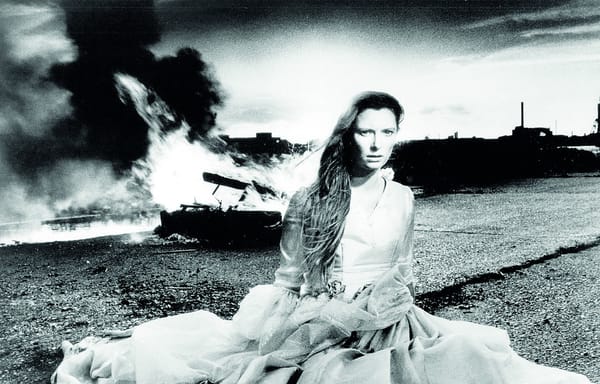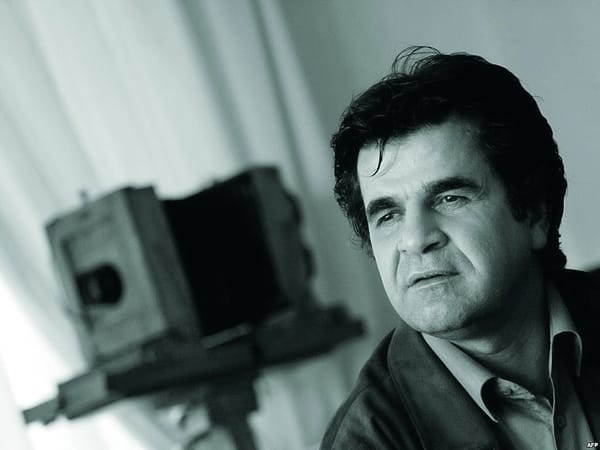An exploration of the irrational
We head down to the opening night of the ICA’s Buñuel retrospective, where a selection of his key films – Un Chien Andalou, Eating Sea Urchins, and L’Age D’Or – display his mastery of the surreal.

Hauntingly beautiful, with no linear narrative, no clear plot, and no apparent meaning, the films of Luis Buñuel mark him out as a revolutionary director and key figure in the avant-garde surrealist movement. At the Institute of Contemporary Arts (ICA) a retrospective of his work and life, begun with his most popular film, Un Chien Andalou (1929), and his most rare film, Eating Sea Urchins (1930); a home-movie made at the house of Buñuel’s close companion and artistic partner Salvador Dalí’s, it has been seen by relatively few.
The ICA, a small intimate venue just five minutes from Piccadilly Circus, “promotes and encourages an understanding of radical art and culture”. The fact they are hosting a retrospective on one of the most original filmmakers of all time is therefore no surprise. The retrospective, which commenced on 12th November and took months to put together, aims to cover all the key periods of Buñuel’s expansive body of films, and includes panel discussions with acclaimed academics, Jean Claude Carriere – an Academy Award honoree and frequent collaborator with Buñuel – and Diego Buñuel, Luis Buñuel’s grandson.
Buñuel is one of the world’s most original filmmakers
The opening was initiated with Eating Sea Urchins; it was the first time even the panelists had viewed this extremely rare film, which was found as recently as 1988 in a biscuit tin at Dalí’s sisters house. Made around the same time during which Buñuel was making L’Age D’Or (1930), it is a film wherein the director has made his mark. As Ingmar Bergman put it: “Buñuel nearly always made Buñuel films” and this is seen in the general direction and use of recurring themes such as the sea urchin, which also appears in Un Chien Andalou. This was a point the panelists focused on, Jo Evans stating how it was hard to watch it having seen its role in Un Chien Andalou.
Then it was onto probably the most popular of Buñuel’s films: Un Chien Andalou. Buñuel created the film on the basis that “no idea or image that might lead itself to a rational explanation of any kind would be accepted.” The film, laced with a dark humour typical of Buñuel’s films, sews together almost completely nonsensical scenes with trivial links and contains iconic scenes, such as the slitting of the eye in half, which still has the power to shock. Given our desensitised society, and the time at which the film was made, it is rather incredible. The film was intended to be an insult to the French bourgeoisie, but instead – frustratingly for Buñuel – turned out to be a commercial success. Being accepted by the masses put him at odds with his intended audience – the likes of Andre Breton and other surrealists – but not excessively, since on completion Luis Buñuel and co-writer Salvador Dalí became the first filmmakers to enter the surrealist group founded by Breton.
Finally the feature film L’Age D’Or was screened, wherein you can really see the comic in Buñuel: brilliantly funny, the film has a strong satirical undertone that cannot be missed. Following the failed attempts of two lovers to achieve intimacy, it was Buñuel’s take on the absurdities of the bourgeois society, and how society is oppressed by rules we ourselves created. Every scene connected to the next with subtle ties, slowly increasing in ridiculousness that reached an apex near the end when the male protagonist, overtaken with immense jealousy, throws inscrutable items out of the window. This rage is then compared to the damnably sinful, as the film cuts to a disturbing reference to de Sade’s notorious 120 Days of Sodom – the survivors are shown exiting the castle, with one survivor, the Duke of Blangis, bearing a striking resemblance to Jesus Christ. Make of that what you will, but I personally am intrigued enough for a second watch.
“Students come here not expecting them to be so funny” Rob Stone exclaimed. And I agree – I was taken aback the first time I saw Buñuel. There is a tendency for directors and films associated with an art movement as nonsensical as surrealism to be considered pretentious and as something meant for a film thesis, but Buñuel is genuinely entertaining. Get a taste of Buñuel’s satirical surrealism at the ICA, and even if you end up hating Buñuel, at least you’ll have watched a film in a charming venue. “The best way is to relax, get the humour, and go along with the black comedy. Rather than trying to analyse and try and work out the meaning for it.” Stone continued, “Embrace it, and see what happens next!” – wise words.
MERYL ANIL
Luis Buñuel: Aesthetics of the Irrational is on at the Institute of Conemporary Arts, until the 6th December. The retrospective will cover all periods of the director’s career, and will ulminate in a round table discussion at the Instituto Cervantes on 2nd December







